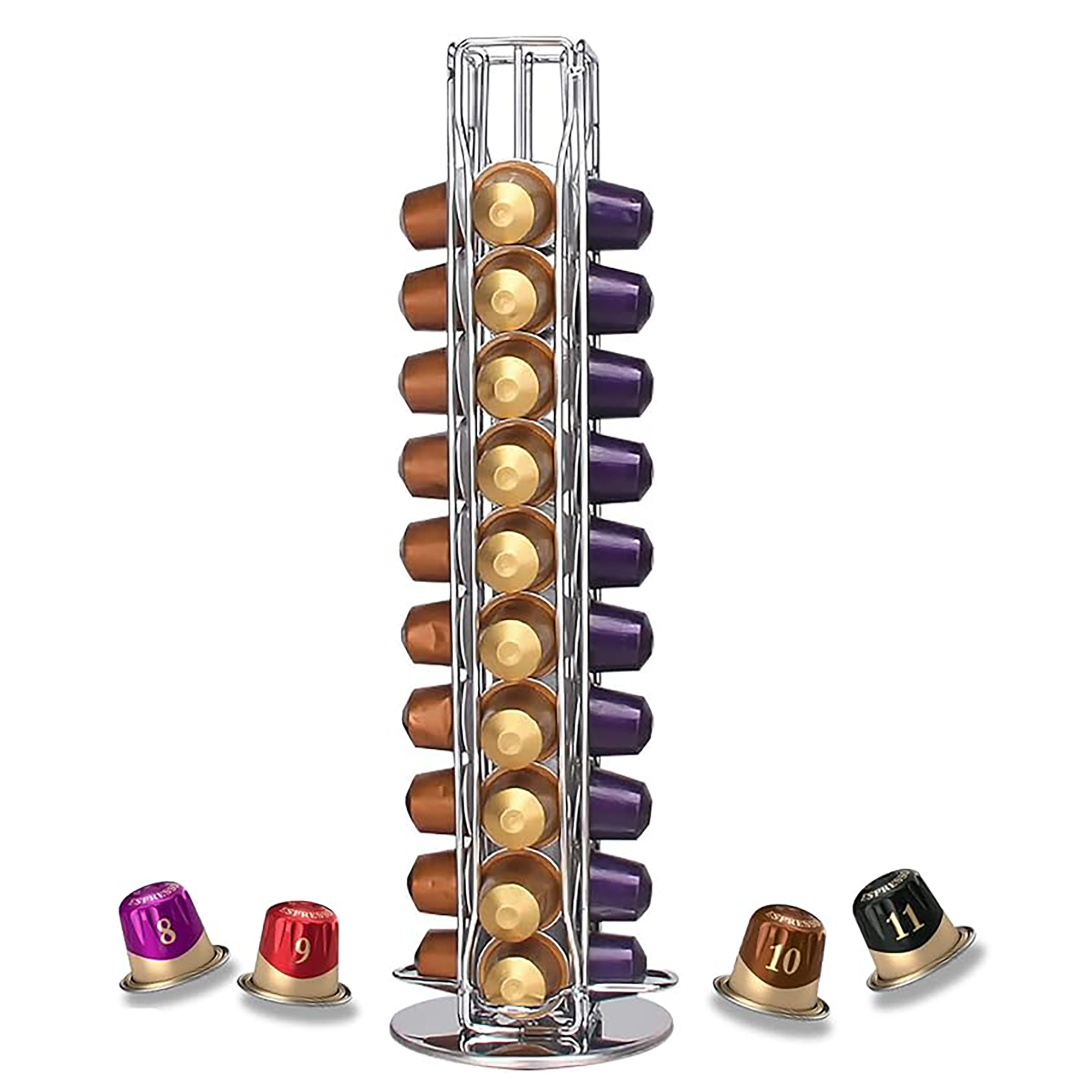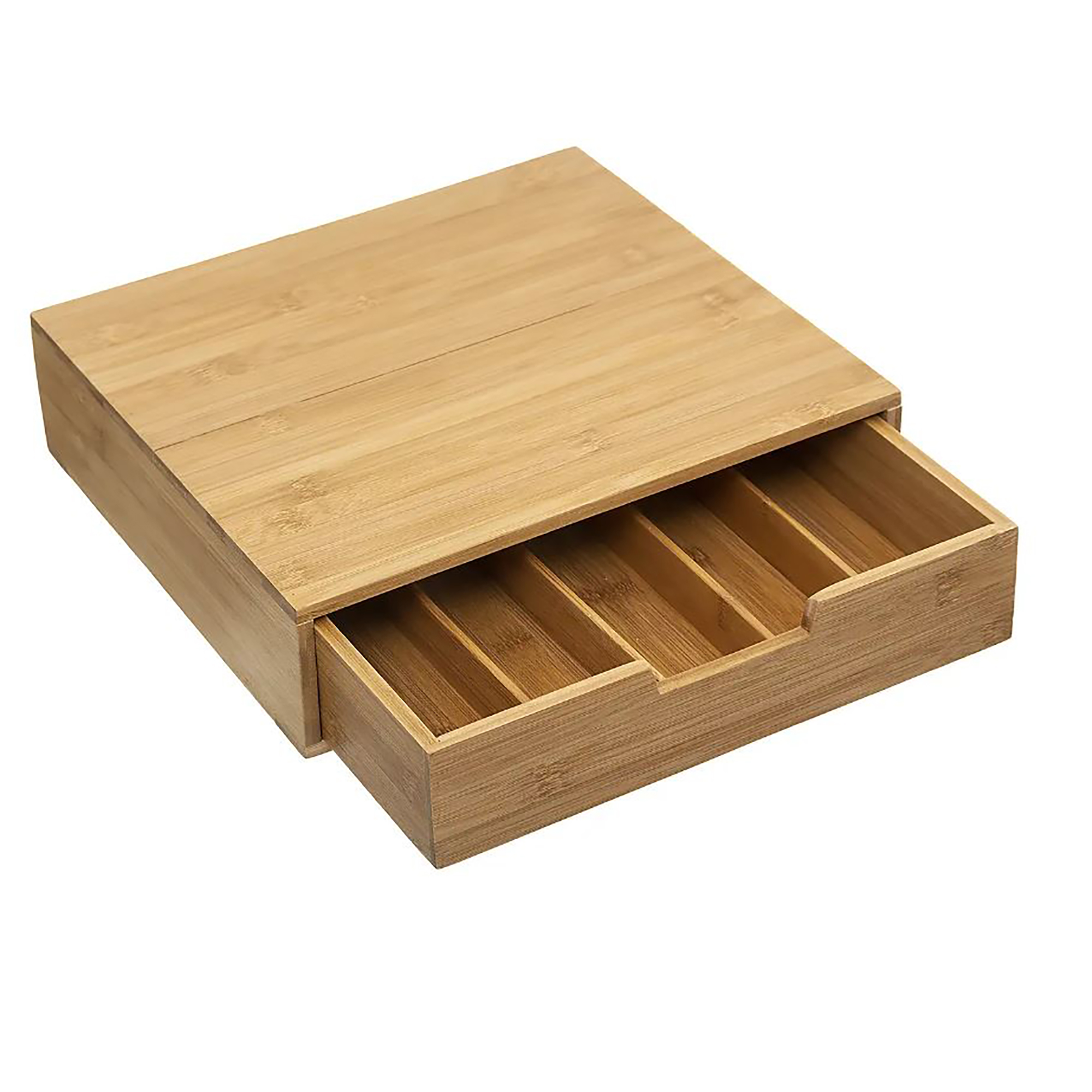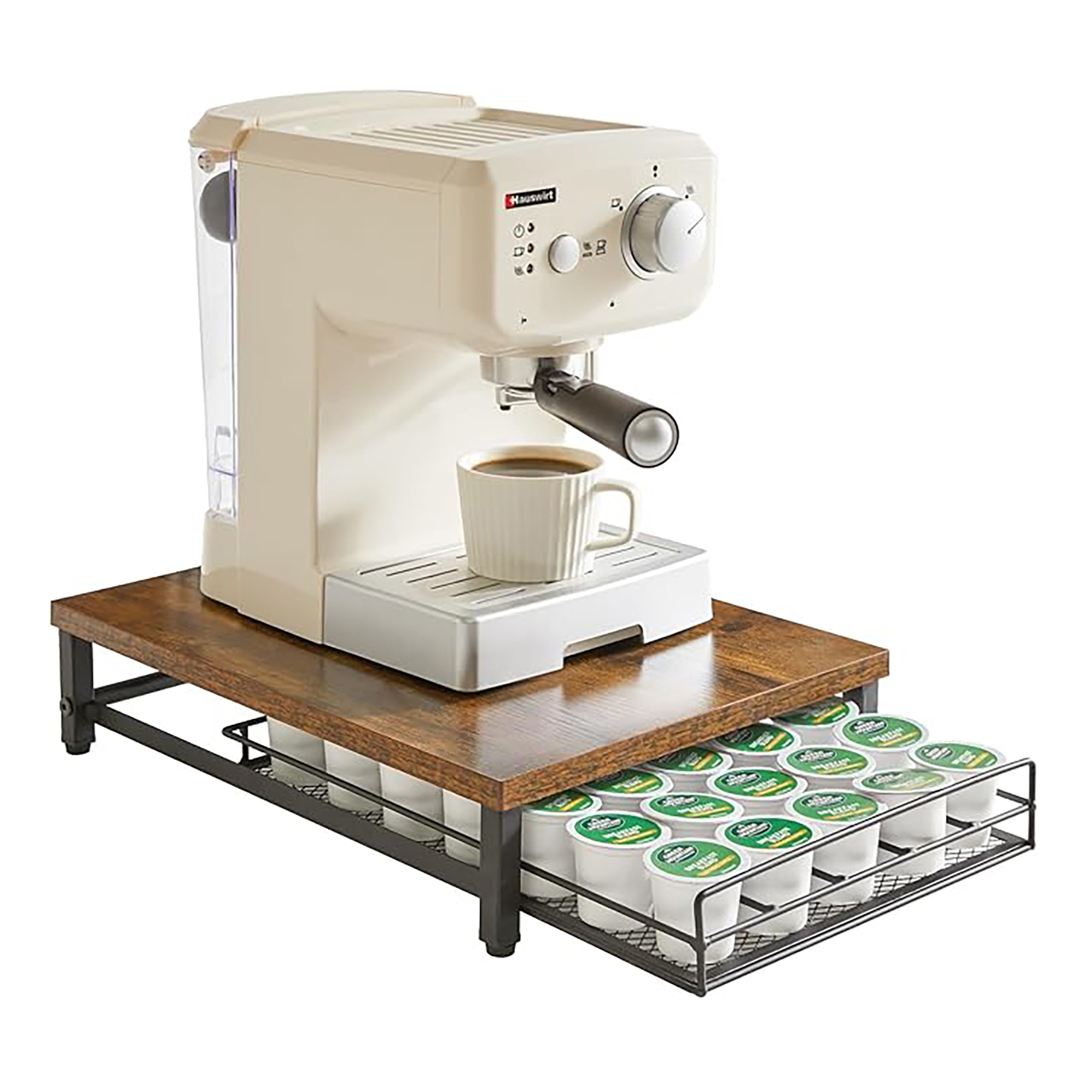10 coffee bar organisation ideas for a perfectly prepped station
From bar carts, to cupboard storage and styled countertops - an organised coffee bar is the secret to starting your day off right
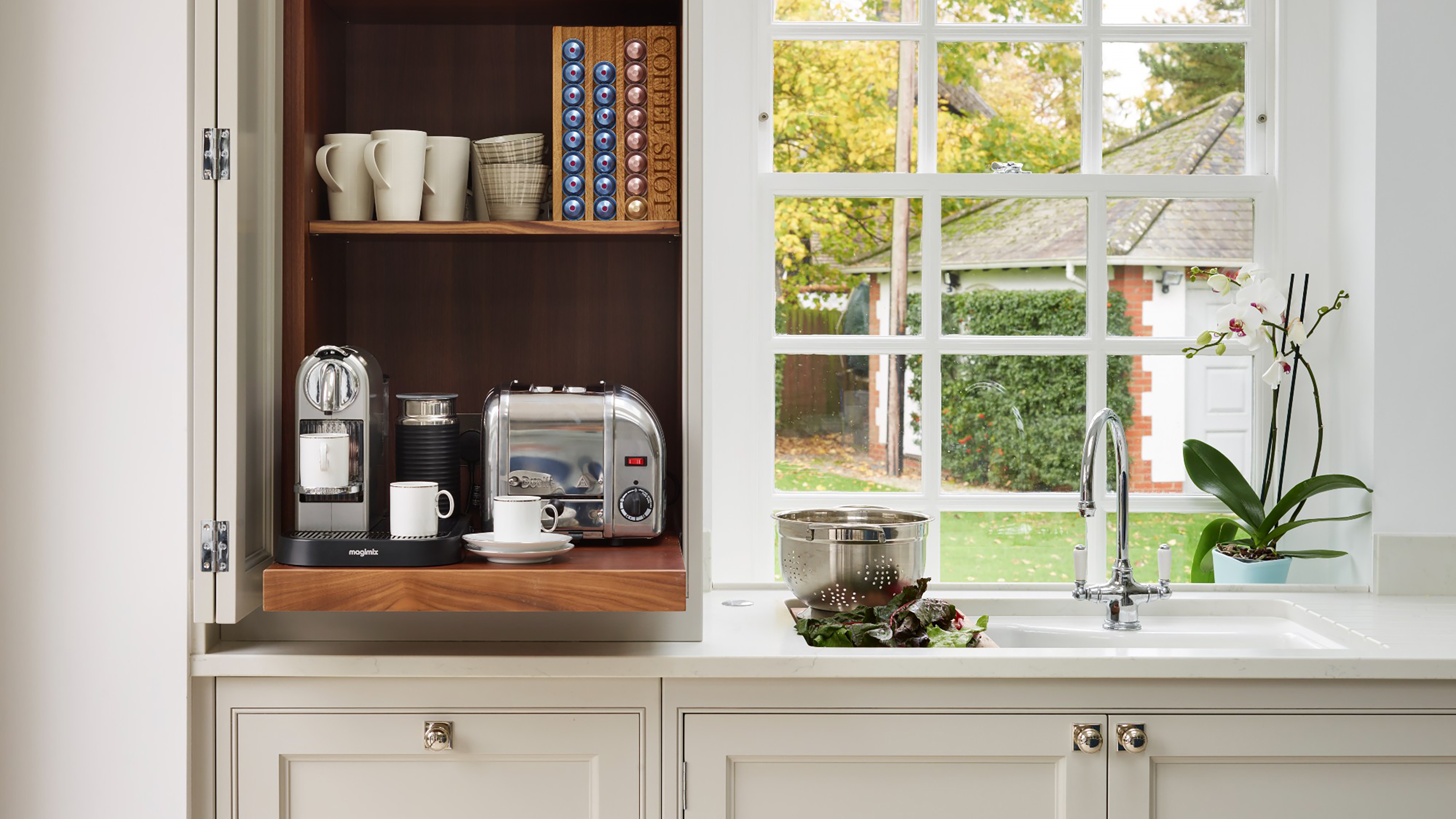
- 1. Decide on a theme for your coffee station
- 2. Carve out countertop space
- 3. Zone out your coffee station
- 4. Don't forget to organise coffee pods
- 5. Use airtight containers to keep coffee beans fresh
- 6. Use labels for easy identification
- 7. Choose a discreet station
- 8. Make the most of an unusual kitchen design
- 9. Use shelving to keep your coffee essentials in easy reach
- 10. Display mug using a rack or hooks
- FAQs
Many of us start our day with coffee. We go to the same spot in the kitchen, filter some ground coffee, put a pod into a machine or simply brew the kettle for a quick cup of instant. You might drink yours on your way to work, down it before the school run or enjoy it in bed with breakfast. Either way, coffee is a key part of any morning routine, so your coffee station deserves a little attention.
Be it a dedicated shelf in a cupboard, a space on your kitchen countertop or a smart trolley set aside, it’s important to keep your coffee bar organised. A streamlined set up can help you create the perfect cup and save you some time in the process.
Fortunately, there are many coffee bar organisation ideas to suit your kitchen, budget and beverage needs. You could go all-out with a built-in coffee machine, or keep it simple with a well-organised corner on your countertop. If your household also consists of a few tea drinkers you’ll need just enough space for a kettle. But if you’re a bit of a coffee snob, you'll need somewhere to store a milk frother, grinder, ground bin and other accessories.
Coffee bar organisation ideas
With plenty of ways to organise your coffee bar, it can be hard to know where to start. So we’ve spoken to the experts and found some inspiration below. There’s a coffee bar organisation idea for every type of coffee lover out there: from the at-home barista to the espresso drinker.
1. Decide on a theme for your coffee station
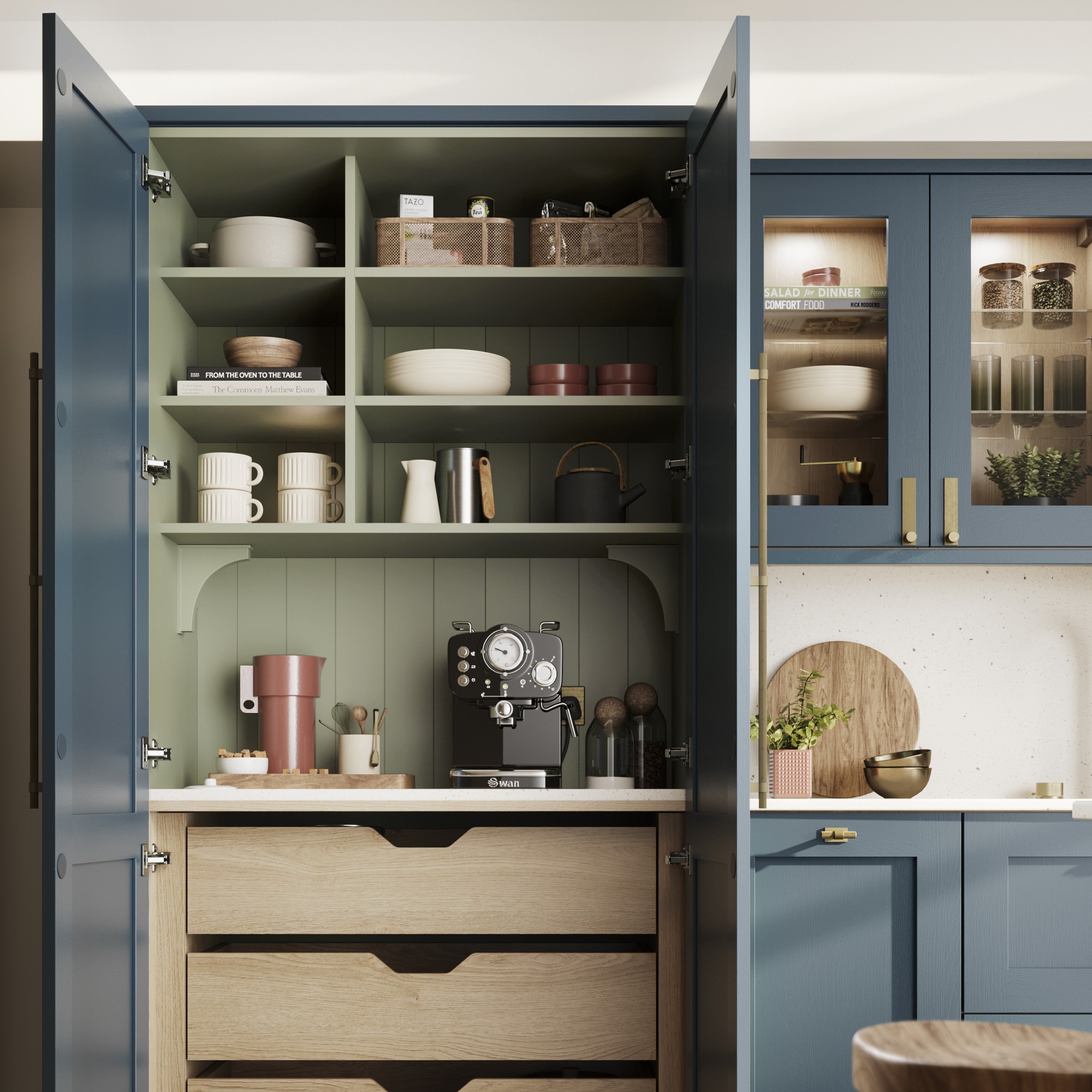
Whether you’ve just had your kitchen re-done or you're working with what you’ve got right now, embracing a particular colour scheme and material choice for your coffee bar will help it look more organised and put-together.
For example, opting for matching practical organisers like mug trays, containers and baskets will keep the area tidy. A stylish mat underneath your coffee machine will catch any spills and make cleaning easier.
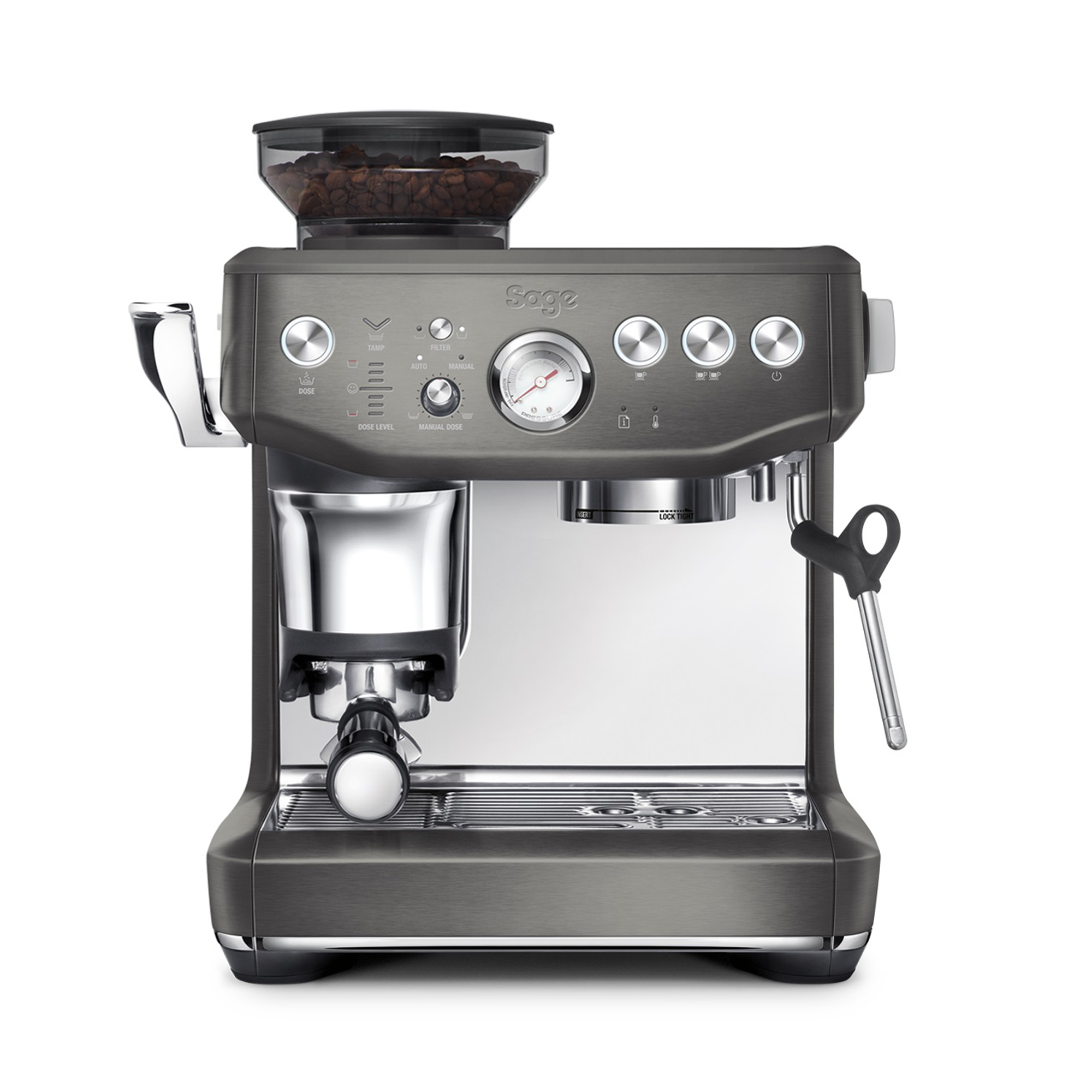
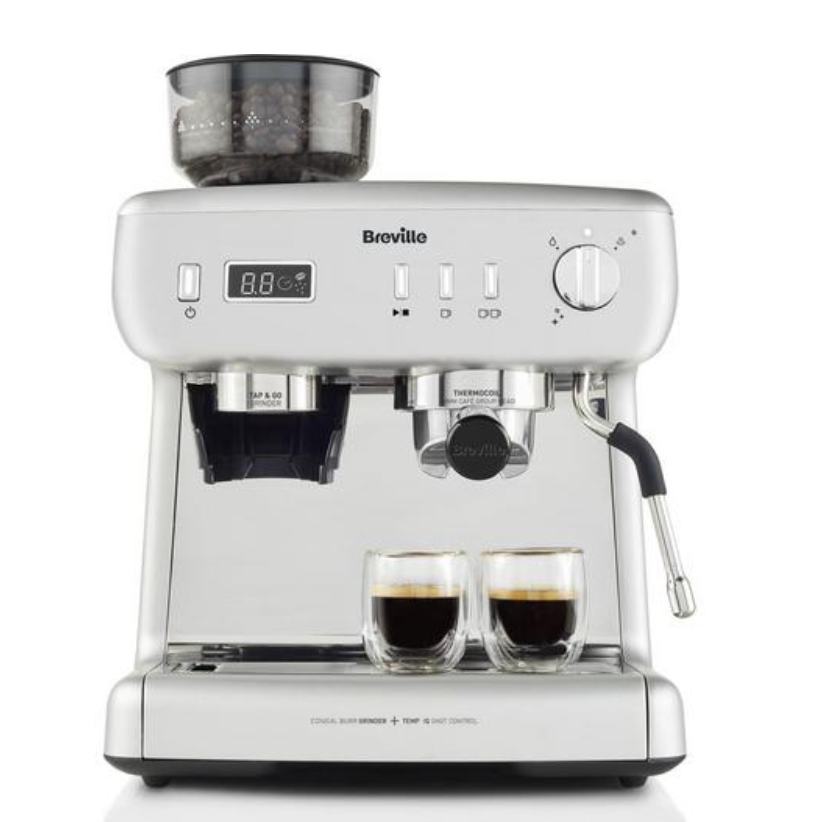
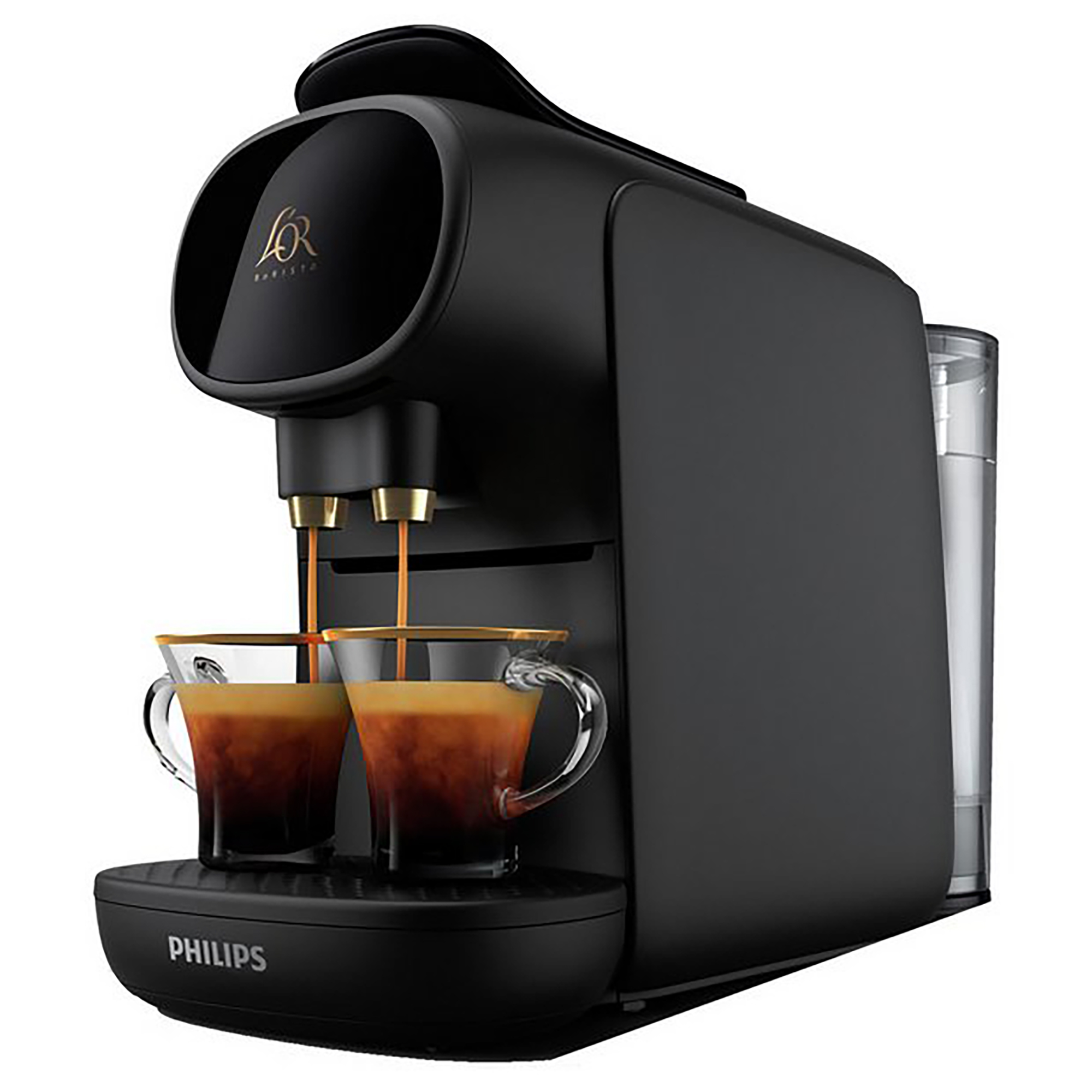
2. Carve out countertop space
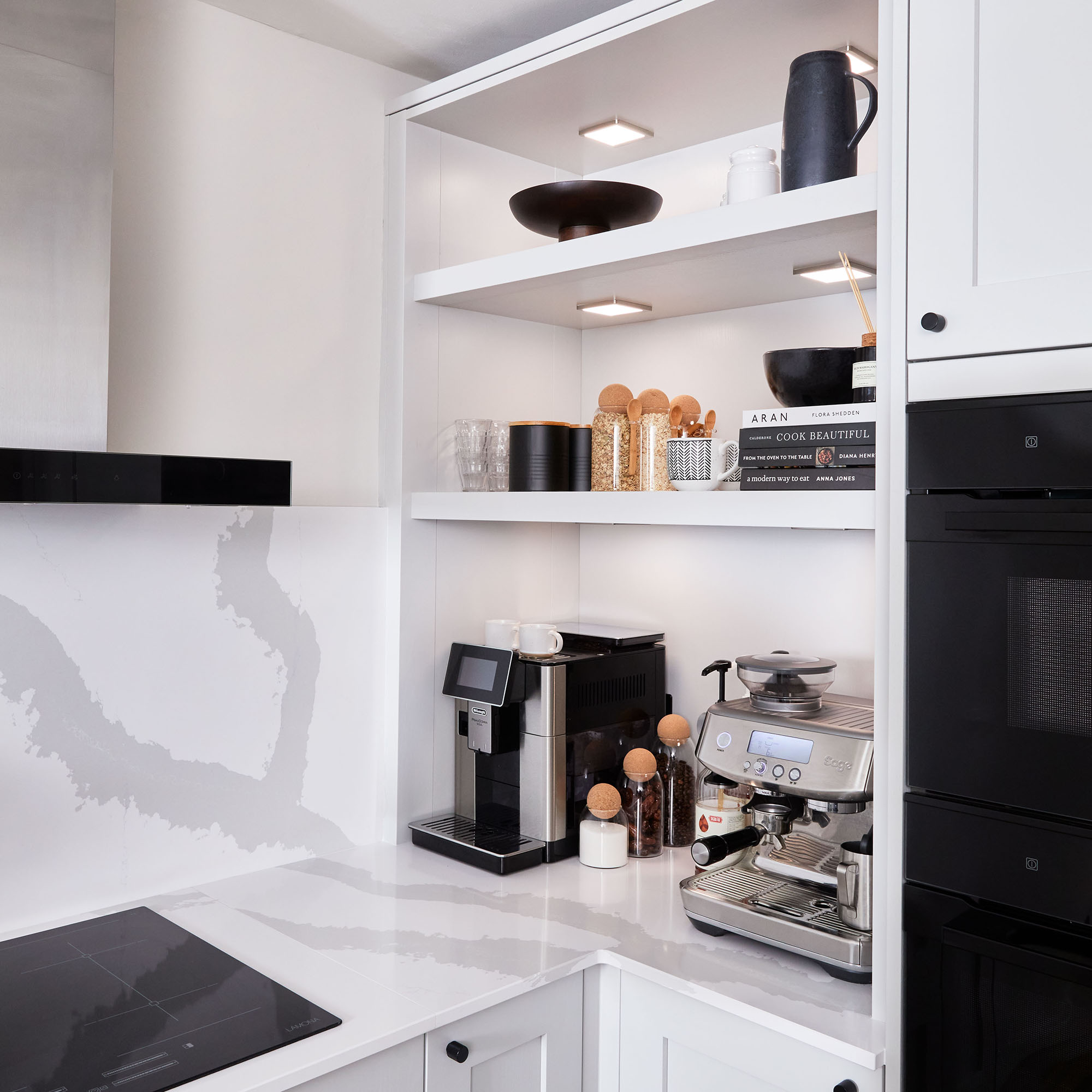
The natural place to put a coffee bar would be your kitchen countertop. However, it's important you have enough room. It might be easy enough for pod machines, but the a bean-to-cup barista might need a little more work surface.
Sign up to our newsletter for style inspiration, real homes, project and garden advice and shopping know-how
In particular, product manager Anna Batten from SMEG says you should ‘remember to save space in front of your coffee machine for tamping. Smeg’s espresso tamping sets come with a food-grade silicone mat for optimal temping and to protect the countertop and portafilter during the process.’ Without one it may feel cramped when prepping your coffee grind and result in more spills.
3. Zone out your coffee station
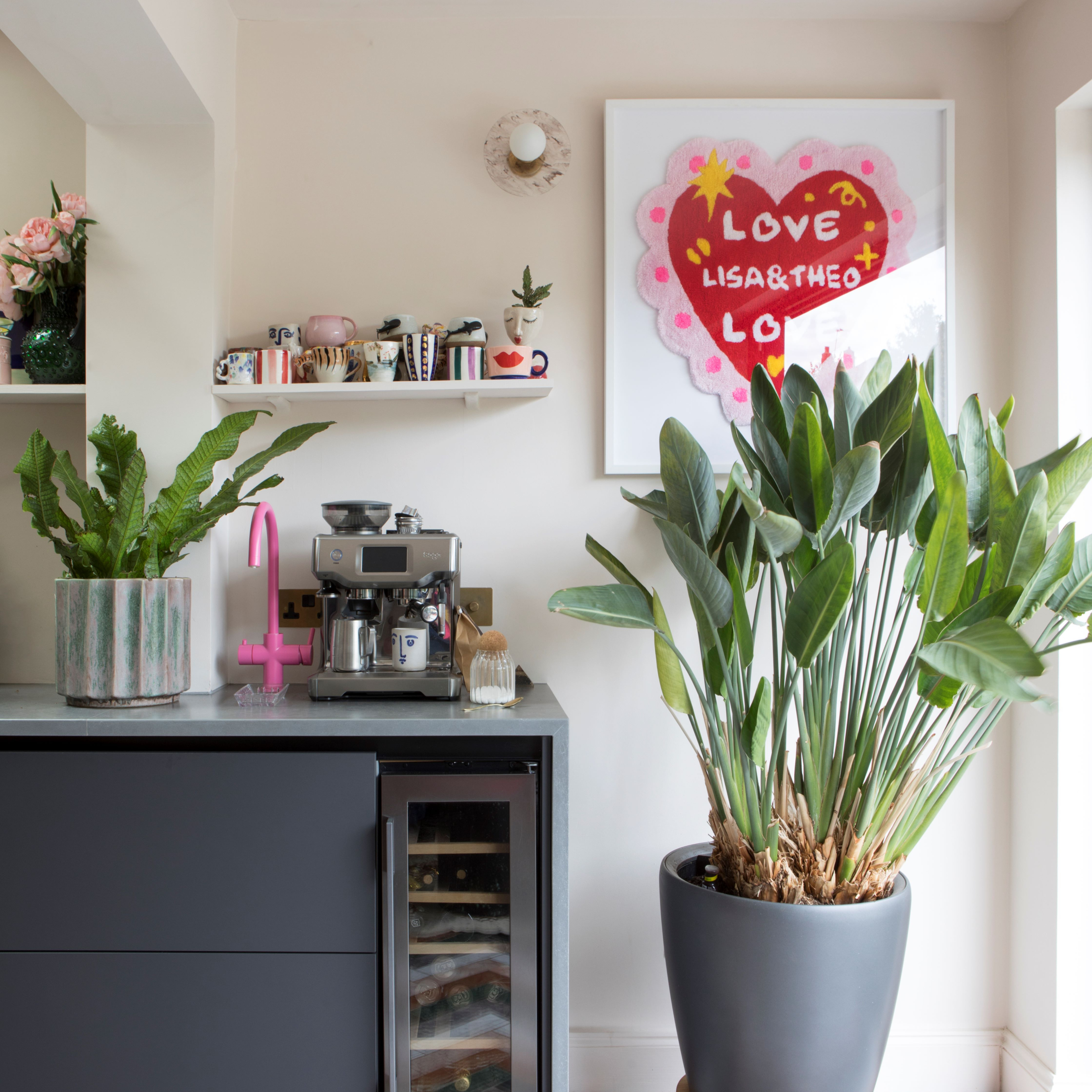
There are many stages to the coffee-making process - brewing, frothing milk, topping, serving and cleaning up. Darren Watts, showroom development and design director at Wren Kitchens explains, ‘dividing your coffee bar into different zones will make the process a whole lot quicker and more enjoyable.'
'Place your coffee maker and grinder in the brewing zone, your supplies in the storage zone, and your mugs and spoons in the serving zone. Regularly clean and declutter your coffee bar to maintain a tidy and inviting space. Wipe down surfaces, wash mugs, and restock supplies as needed to keep everything fresh and organised,' he adds.
4. Don't forget to organise coffee pods
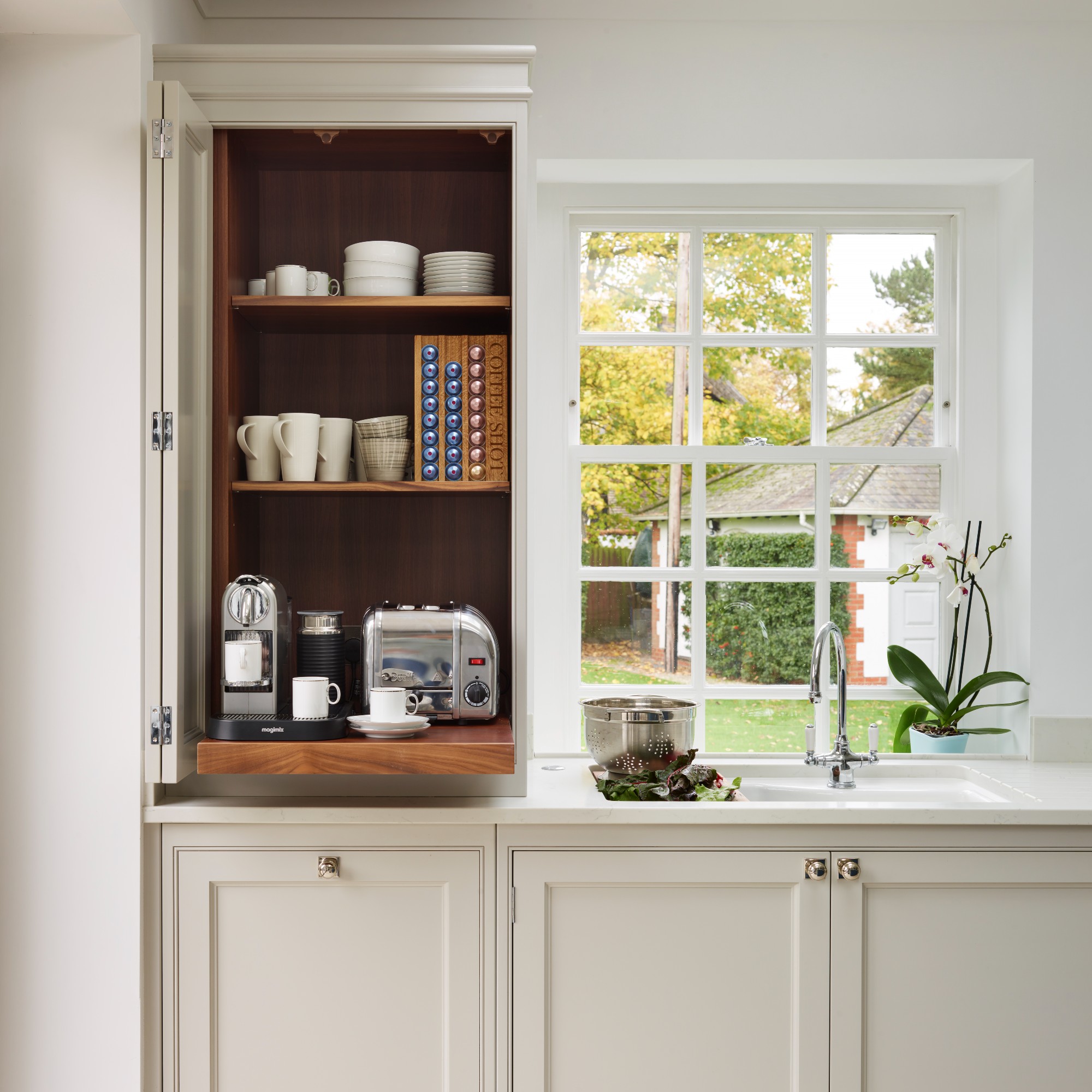
They say you’re either a ground or coffee pod user, and there’s no in-between. If you love nothing more than popping a pod into the machine and having your coffee ready with the touch of a button, you’ll know how chaotic it can get storing all of your different types of coffee pods.
Ashley Palmer-Watts, co-founder of Artisan Coffee Co, says a ‘coffee pod organiser, like a Muji clear perspex mini drawer organiser, is a great way to manage a collection of characters. By neatly arranging them in drawers, you can easily choose which coffee strength, blend or flavour you want that day.’
5. Use airtight containers to keep coffee beans fresh
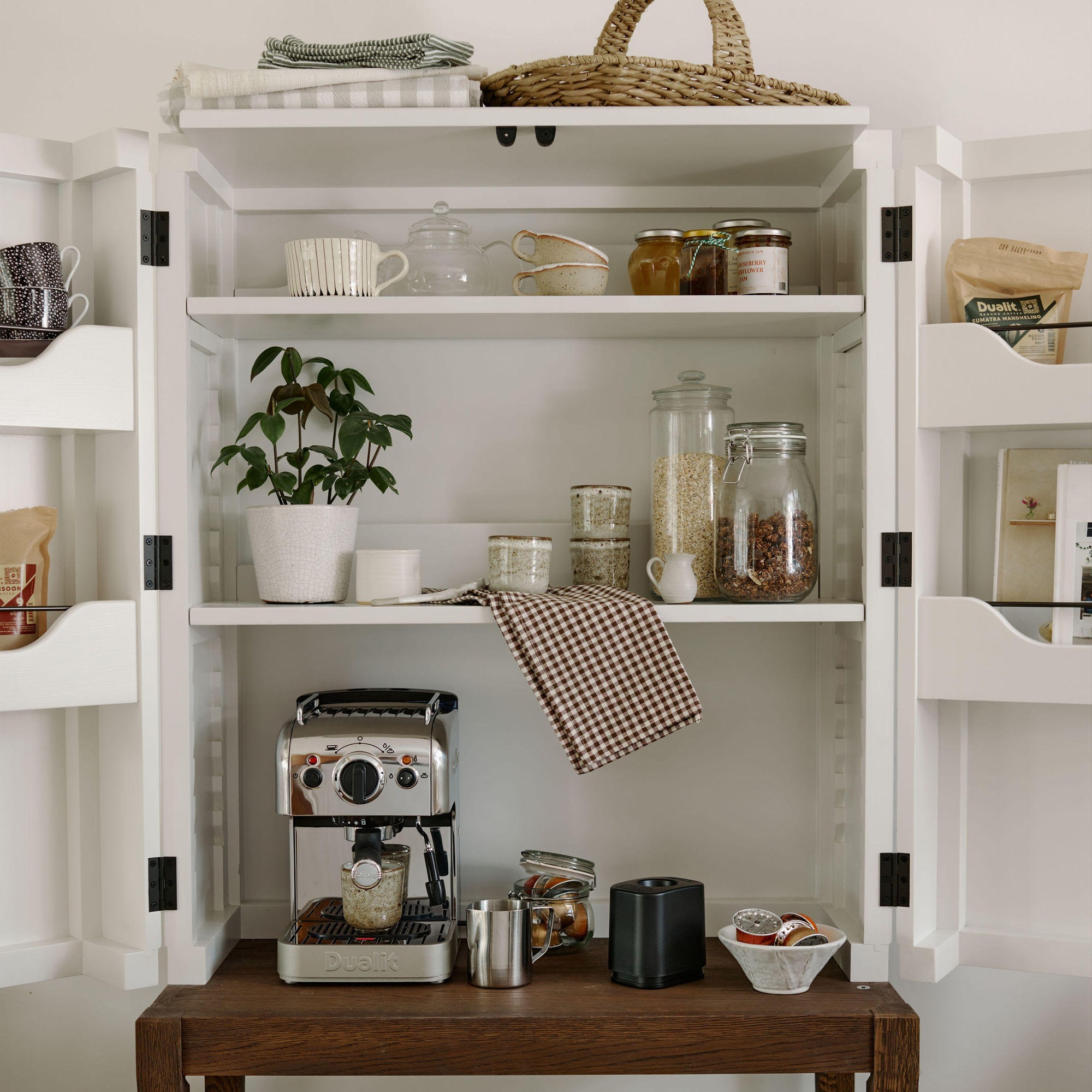
Clear containers are a great kitchen storage idea for just about anything. From cereals and dried pasta to fruit and veg, plastic or glass airtight containers are ideal for keeping produce fresh, saving on waste and making your kitchen look quite aesthetic in the process.
Anna Batten recommends only keeping coffee beans in the open air for 3-4 days before losing their freshness. She suggests ‘always storing them in an airtight container,’ especially if you like to stock up on your favourite brand. There are lots of sleek coffee bean containers you can buy. We love these on-trend ribbed glass jars from Amazon.
6. Use labels for easy identification

If you like to switch up your coffee flavour and strength regularly, be it with various bean roasts, syrups or condiments, you'll want to find a spot to store them.
Alex Hingham, co-founder and CEO at Exhale recommends ‘a clear labelling system will help you identify which one is which, especially if you have decanted your coffee ingredients into clear containers.’
7. Choose a discreet station
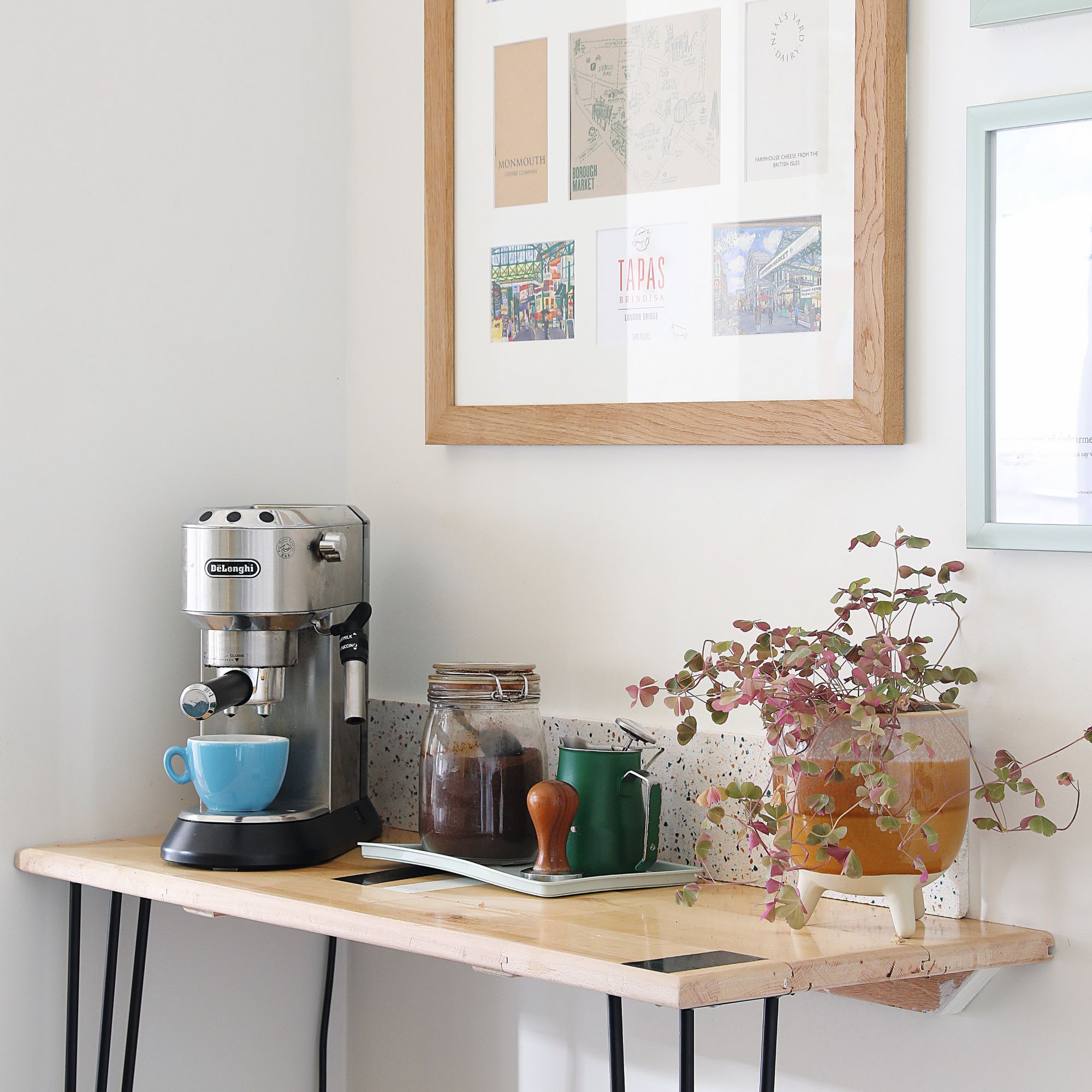
Of course, not all kitchens will have enough counter space to dedicate to just coffee. So if you’re struggling to squeeze a coffee maker and everything else onto your work surface, consider investing in a modular coffee cart or console table.
‘Equip the cart with all essentials you'll need, such as a coffee machine, grinder, condiment station, and storage for cups and supplies,’ says Alex. ‘Kept neatly against a spare wall or in a living space and moved into the kitchen to collect your condiments, a kitchen cart offers storage that can be reconfigured to suit your setting.’
8. Make the most of an unusual kitchen design
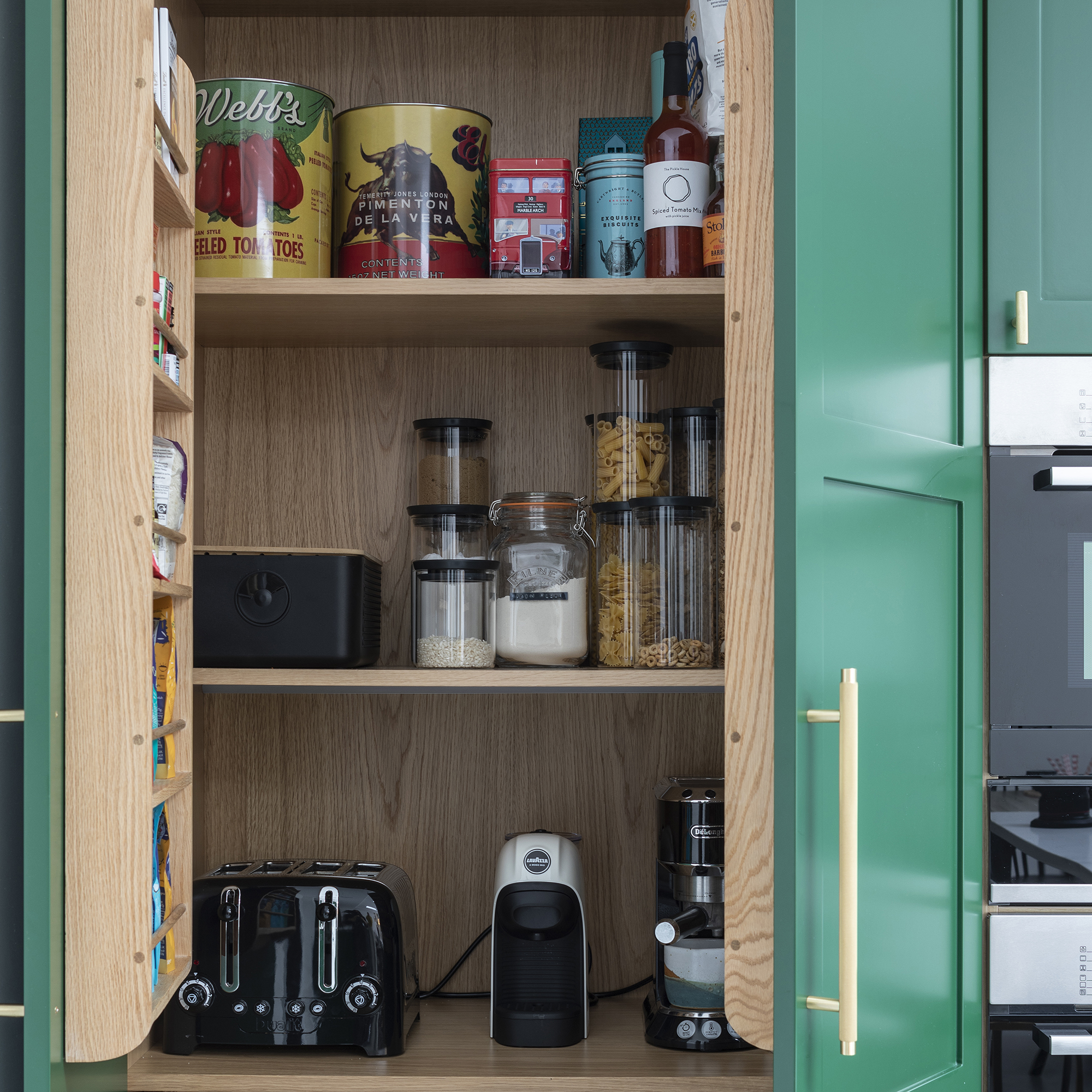
Some kitchen layouts have alcoves, nooks or pantry spaces that can be utilised as a coffee station space. Often adjacent to a kitchen, small odd spaces you don’t quite know what to do with are perfect for a tucked-away coffee bar.
Similarly, if you have lots of built-in cabinets or pantry cupboards that don’t have a lot of stock, why not turn them into a designated coffee spot? Display mugs on shelves, use clever stackable storage and rotating shelf dividers with your coffee maker below on the counter.
9. Use shelving to keep your coffee essentials in easy reach

By comparison, if you are currently undergoing a kitchen renovation or have the option to redesign your kitchen space then Louisa Eggleston, creative director for Humphrey Munson says ‘Function is first and foremost, so think counter space for small appliances like the coffee machine with enough room for preparing the drinks themselves.'
'A pull-out shelf is useful for easy access to everything you need without taking up too much room, and choose open shelving above for storage of mugs, cups, coffee and storage jars. Consider the height of shelves if you’d like to keep a teapot or cafetiere there too,' she adds.
10. Display mug using a rack or hooks
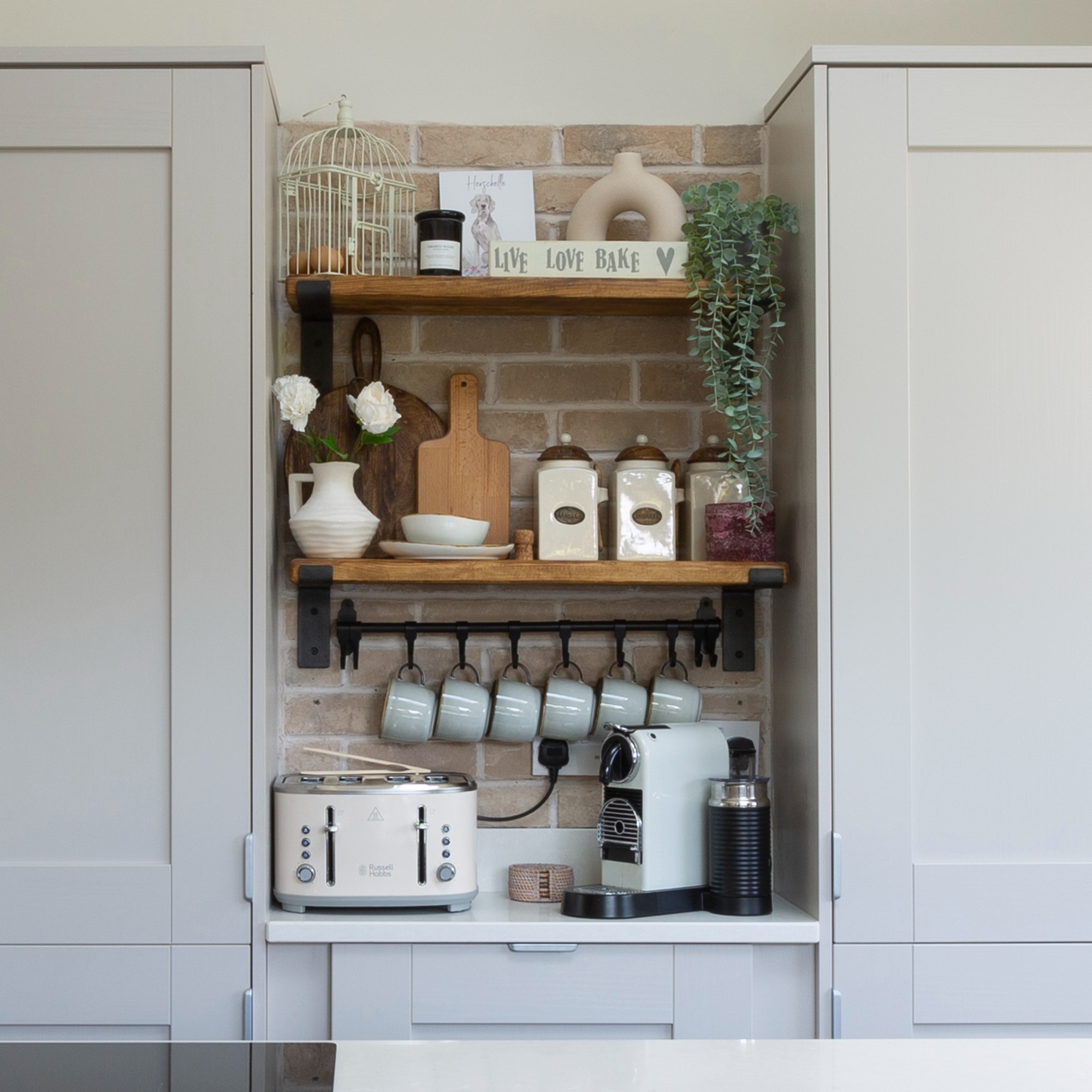
If you have some decorative mugs you just love to use, make them a part of your decor by hanging them from a mug rack or adding hooks to the wall (like this wall mounted hook rack from Amazon). Storing your mugs as part of your coffee station display is both functional and eye-catching.
If you’re in a rental or haven't got around to designing your space as you would like it, having your cups on show can add a pop of colour and pattern to an otherwise plain kitchen space.
FAQs
Where to put a coffee bar in a house
It seems all experts agree that a coffee station should be placed in the kitchen. But it’s not just as simple as keeping your cups in the same place you keep the rest of your crockery.
Alice and Ben, Founders of RiSE coffee, the coffee subscription box brand, firstly explain ‘You will need to plug in your coffee equipment into an electricity source’ whether you have a barista-standard coffee maker or need a kettle for a quick cup of instant coffee.
You should therefore ‘consider where you have plug points and whether they provide a suitable spot for the machine’. Similarly, ‘you’ll also need a water source nearby, and a bin.’ You won’t want to drip water or drop any coffee grounds as you walk to and from your sink and kitchen waste bin.
You should also make sure your coffee station is kept away from your cooking area. Ashley Palmer-Watts, co-founder of Artisan Coffee Co, says ‘naturally a clear worktop in the kitchen is the best place for a coffee station, but it shouldn't be near your hob, as fat and moisture from frying could enter your coffee space, dirtying it and even affecting the way it tastes.'
Product Manager Anna Batten from SMEG also adds that 'a coffee station should be within easy access to the fridge for storing perishables such as milk.’ Then suggesting ‘a mini fridge can be the perfect coffee station addition to allow you to set up in a home office, studio space or wherever else you may choose.'
What should I have in my coffee station?
With so many stages to the coffee making process, depending on your skill-level of course, it can be easy to get carried away with gadgets, accessories and even coffee toppings. To avoid cluttering your coffee station, ensure you have the best of the basics before you start dressing up your space with lots of add-ons. Depending on your go-to type of drink, you’ll need a coffee maker.
The machine itself will be the main attraction to your coffee station - so it’s important you choose the best coffee maker for you.
If you like to grind your coffee yourself, product Manager Anna Batten from SMEG states, a ‘high quality grinder with adjustable grind size is a coffee station essential. Different grind sizes create different coffee strengths so you can customise your cup without having to faff with pod sizes and flavours.'
For an espresso machine set-up, there’s lots more to consider. Ashley Palmer-Watts, Co-Founder of Artisan Coffee Co states you’ll need ‘a pair of small electronic scales, water filter, knock box for spent coffee, a cloth to clean your steam wand, a brush for keeping your kit clean and cleaning tablet to regularly rinse your machine, as well as your machine, milk jug and grinder.'
All that's left to do is make your brew...
Louise Oliphant is the Ecommerce Writer at Ideal Home. Bringing a bunch of bedding expertise from her previous role in PR, Louise is eager to share useful sleep content, including what to look for, when and where to buy the best bedroom products. Think everything from gorgeous luxury bedding, to duvets that’ll keep you at optimum temperature all night long. Aside from reviews to help get essential shut eye, Louise also writes shopping content for homeware items that’ll add a decorative touch to your space.
